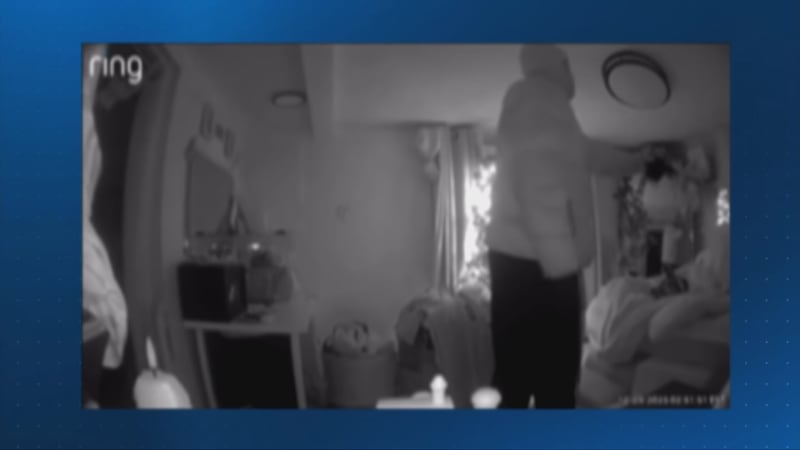The first total solar eclipse over the U.S. mainland in 38 years happens on Aug. 21. The Moon’s shadow will darken skies on approximately a 70-mile-wide path from Oregon to South Carolina.
Residents of the Pittsburgh area will experience a partial solar eclipse that day, and Carnegie Science Center is one of the places to be to fully enjoy the phenomenon.
CLICK HERE for the Carnegie Science Center's Astronomical Calendar
Throughout the August 21 partial eclipse, visitors are invited to watch the event through special solar observation equipment, including a solar telescope. This telescope is designed for safe observation of the sun.
Along with special eclipse-themed science demonstrations and crafts, live video feeds of the total eclipse visible in other parts of the country will be available in the Buhl Planetarium and the Science Stage. The video feeds will be accompanied by commentary with the Science Center’s astronomical specialists and experts.
TRENDING NOW:
- 7 things to know about the rare total solar eclipse crossing the nation this August
- Don't let clouds ruin your solar eclipse view — Use these maps to find clear skies near you
- Photographing the eclipse: Time to prepare is now
- VIDEO: Explaining the solar eclipse
What is an Eclipse?
A solar eclipse occurs at New Moon when the moon passes directly in front of the sun and the moon’s shadow falls on earth. The moon’s shadow has two parts, a fainter outer shadow called the penumbra, and a dark inner shadow called the umbra. When there is a partial eclipse, the moon's penumbral shadow falls on earth and only a fraction of the sun's bright surface will hide behind the Moon. When there is a total solar eclipse the sun is only visible behind the moon's umbral shadow.
The Great American Eclipse
This is the last total eclipse that will be viewable from the United States this calendar year.
• The last total solar eclipse over part of the US mainland occurred in 1979.
• The last coast-to-coast total solar eclipse was in 1918.
• The August 21 total solar eclipse is the first to travel only through the continental United States and no other country since our nation's founding in 1776
• The next total solar eclipse over the United States will be in 2024.
What Will We See in Pennsylvania?
Since Western Pennsylvania and the tri-state region are not in the path of totality, this event will be a partial eclipse in the Pittsburgh area. Because the moon will cover a large portion of the sun that afternoon, this event will still be a spectacular sight for sky watchers.
The partial eclipse starts here in Pittsburgh at 1:10 p.m., when the sun is almost directly overhead.
Maximum eclipse occurs 85 minutes later at 2:35 p.m. The maximum eclipse will be visible for a little over two minutes. The partial eclipse ends at 3:55 p.m. Observers should look for the unusual nature of shadows that occur during the partial eclipse.
Partial solar eclipses typically occur several times a year and the event looks different depending on where the observer is located within the United States. While this eclipse appears as partial when viewed from Pittsburgh, other areas of the country will witness the event as a total eclipse. Solar eclipses are only observed during a new moon.
Remember! Safety First!
Staring at the sun with the unaided eye can cause eye damage. Even a brief glimpse of the sun through unfiltered telescopes or binoculars can cause blindness. Always use proper filters or safe solar projection techniques. Eye safety should be a top priority when observing a solar eclipse.
Never look directly at the sun without proper eye protection. Never look at the sun through a telescope without a solar filter on the large end of the scope and never use small solar filters that attach to the eyepiece. An unprotected look of the sun through a camera’s viewfinder, or a telescope or binoculars can cause permanent eye damage.
Other tips include:
Don’t use sunglasses; they don’t protect your eyes from the damaging rays of the sun.
Do use a pair of inexpensive “eclipse glasses.” They have special safety filters that permit safe viewing. “Eclipse glasses” will be available at the Science Center’s XPLOR Store ahead of the event.
Do use number 14 welder’s glass. It also gives your eyes good protection.
Don’t view through any welding glass if you can see the surrounding landscape or don’t know its shade number.
Do use safe indirect ways for observing the Sun, such as projecting the image or a pinhole projector.
Do project the image of the sun onto a white surface with a telescope or binoculars. If projecting the image, do keep your finder scope capped if you are using a telescope. If projecting the image, do keep the cover on one of the two tubes if you are using binoculars. Keep in mind the optics of your device can get very hot, so consult the manufacturer’s directions before doing this sort of projection to keep from damaging your equipment.
Cox Media Group






